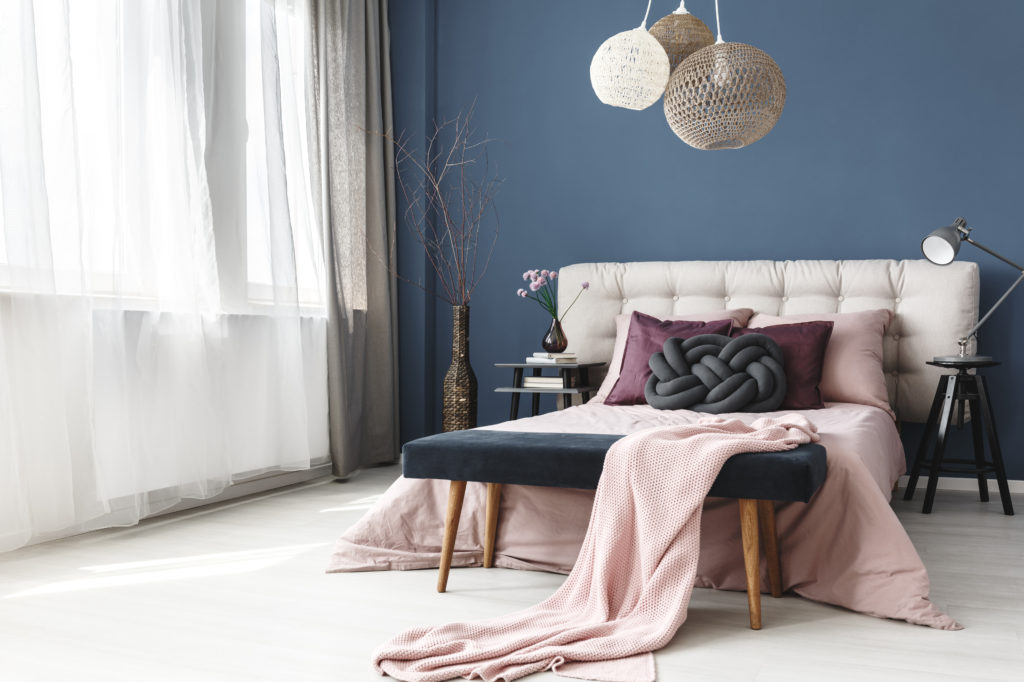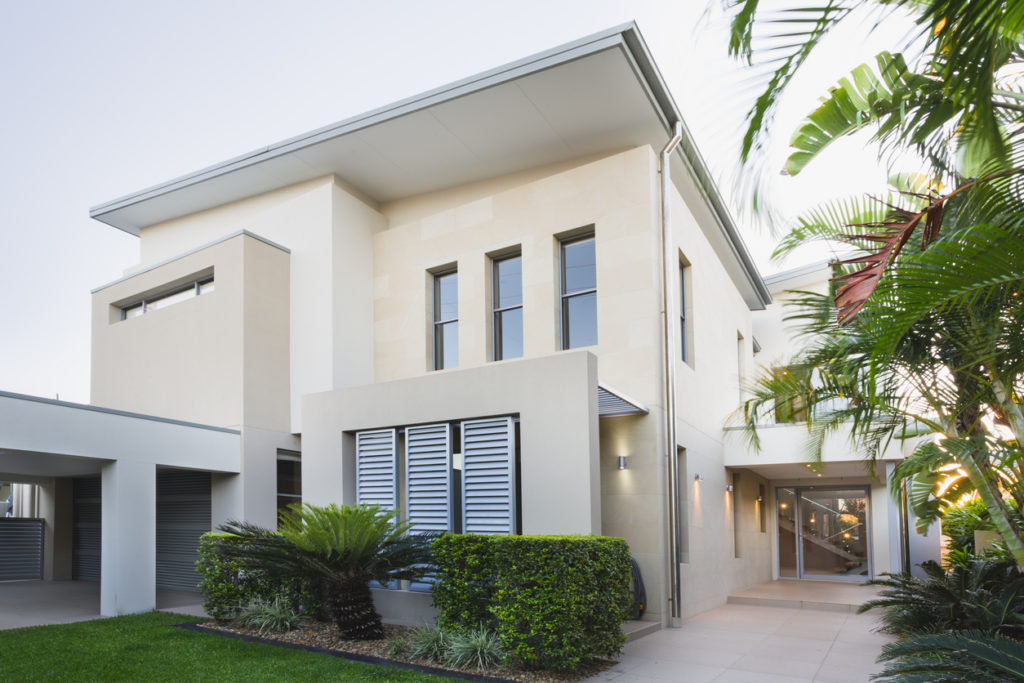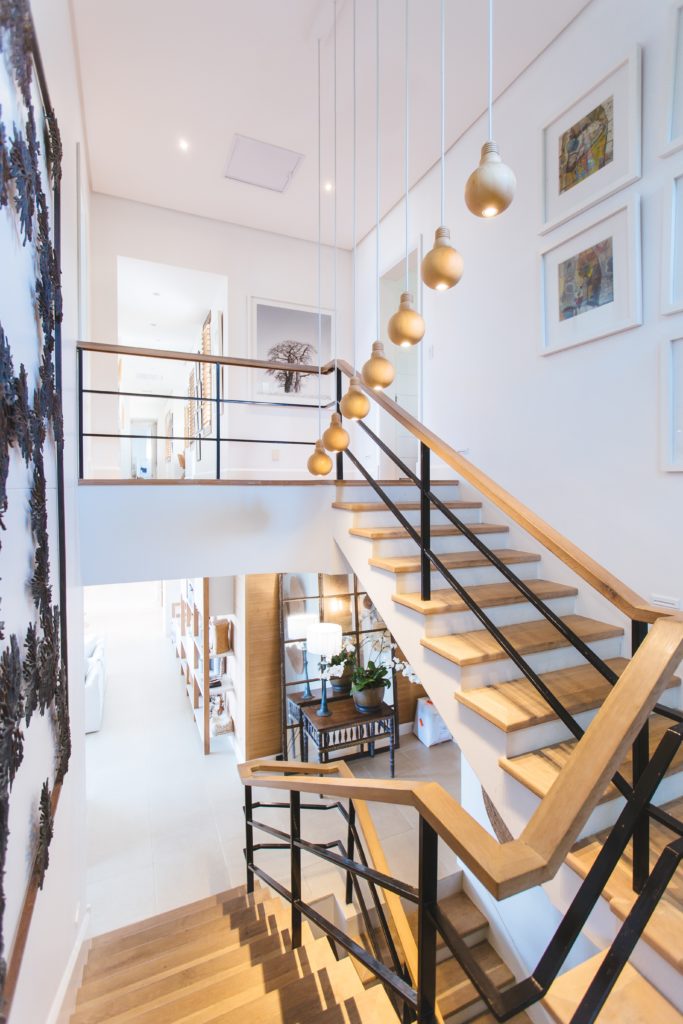PAINTING 101 WITH COLORMAKER INDUSTRIES
We demystify how to prepare your surfaces before painting, choosing the right paint for your requirements and how to maintain a great finish on your painted walls, floors and other surfaces.
A coat of paint is a relatively inexpensive yet effective way to update your home and DIY painting can be lots of fun once you know what materials you need and how to proceed. So let’s get painting with these simple tips and advice.
PREPARATION OF YOUR SURFACE IS KEY TO A TOP PAINT JOB
Painting your walls can bring new life to a room, and just as important as choosing the right paint finish and colour is preparing the walls before painting. Check out these simple tips on cleaning and preparing your walls so that the paint goes on easier and the finished job looks just like it was done by a professional!
Here’s what you’ll need:
- A drop sheet
- Gap Fillers
- Safety Equipment
- Sandpaper & sanding block
- Scrapers
- Sugar Soap
- Bucket with water
- Masking tape
- Lint-free rag
- Ladder
Firstly, clean your walls with a mixture of sugar-soap and water. You’ll be amazed at the difference it makes. Ensure you wear rubber gloves to do this (as the sugar soap can be sensitive to skin) using a sponge to clean the walls. This removes any fats and dirty marks enabling the paint to adhere perfectly to the wall and clearly shows up any nicks and imperfections that need to be repaired before painting. Wipe the sugar soap off with a lint-free rag soaked in water before moving to step.
Next put down a drop sheet, and scrape off any loose paint or other imperfections with a scraper. This can be in the form of dints, scratches or cracks which will need to be filled with a Spakfilla. Spakfilla is available from paint shops and hardware stores either as a powder to be mixed with water or there are also tubs available of a gap filler which are great for corners and hard to reach areas.For the powdered filler, mix it in a bucket to a ‘toothpaste’ consistency. Then apply the filler with a scraper to the wall or surface, overfilling the scratches or cracks at first. Once the filler dries you can sand it back to a smooth finish. For cracks or gaps in corners you can use a gap filler with a calking gun (also available from your local paint shop) to get into these spots. Once you’ve applied this filler with the gun, wipe it off to a smooth finish with a sponge. Sand the parts of the wall or surface you’ve prepared with a cork block covered with a fine sand paper and then you are ready to paint.
CHOOSING THE RIGHT PAINT FOR YOUR SURFACE
- How big a difference can be by choosing the right type of paint will make to the end result of painting a home interior surface?
Absolutely massive! For interiors for example, you’d choose a satin or gloss (oil or water-based) enamel for architraves and window frames as these paints are typically stronger and stand up to more wear and tear from kicks/abrasion etc., and a (typically ultra-flat) ceiling white for the ceilings, but the walls need a slight sheen finish dictated by intended use. If you are looking to paint a feature wall, that would typically be in a flat finish, however a flat finish is not practical if you have small children as the wall is subject to traffic/fingerprints. A flat paint can scuff in these circumstances and stain easily, it can also be difficult to clean and show a lot more obvious signs of cleaning.
Most people use a low sheen paint for interior walls. With low-sheen, you’re striking a balance between the more visually attractive lower gloss and the extra serviceability of the higher sheen. For really high traffic areas (like a kid’s play room) and for wet areas like kitchens and bathrooms, you may go to the next gloss level up, like a semi-gloss – as these paints make it easier to wipe-away marks and stains. Also for kitchen and bathroom ceilings, you’d generally choose a semi-gloss or flat finish with an extra dose of anti-mould additive to be included.

Colormaker offers an ULTRAWASH Acrylic interior wall paint which is available in Flat, Low Sheen, Semi-Gloss & Gloss finishes. It’s low VOC which means you can breathe easier when you apply it, as it’s low-irritant. This paint delivers exceptional coverage and a smooth finish, and is wash & scrub resistant so great if you have small children, and ULTRAWASH can be tinted to any colour.
2. What finish should I look for when choosing an interior paint?
Glossy finishes are typically more wash resistant, but do show more surface imperfections. Flat finishes are great for hiding surface imperfections but are inherently more porous and therefore more likely to stain and be harder to clean. Also, humid areas like bathrooms and kitchens typically dictate a slightly higher gloss level so you can wipe them clean. So, it’s very much horses for courses; you just need to decide what course you want, and the gloss or sheen level should flow from that decision.
Flat and matt finishes are in vogue at the moment as people prefer the non-reflective finish. Colormaker’s PERMACRYLIK scenic paints are excellent if you require a dead flat Black or White finish wall. For example the white walls of an art gallery are often painted with a White flat paint such as this.
If you wish to achieve an on-trend matt-look black wall (similar to this wall shown in this image below), Colormaker’s PERMACRYLIK Black scenic paint is excellent for achieving this look.
3. What types of paints are best to use for home exterior surfaces?
Acrylics are very much the way to go. They have excellent UV resistance, which is a must under the harsh Australian sun. As with interior paints, function will be dictated by intended use. However, it is worth noting that very little flat paint is used outdoors other than for eaves and soffits which are out of direct sunlight. Most exterior walls we would recommend a low sheen or satin finish, with feature work picked out in a higher gloss finish. Colormaker offers a high quality exterior SOLARCOLOR paint which gives protection against the elements with UV resistance. SolarColor delivers a tough, durable finish for long-life exterior protection and comes with a 10 year Guarantee. SOLARCOLOR is also a low-VOC formulation, and can be tinted to any colour.

For painted masonry, an elastomeric wall coating offers durability in the harsh Australian elements. These are typically high build coatings with considerable flexibility and thus able to withstand the stresses and strains associated with diurnal temperature fluctuations. Colormaker pioneered the development of this coating type with their ACRYLMERIC WeatherTuff range back in the 1970s and a number of landmark buildings on the North Shore and Northern Beaches stand as testimony to the functionality and longevity of this product type, particularly in harbour-side and absolute beach-front locations where increased salt resistance can be an issue. The WeatherTuff protective exterior coatings range is available in 22 Colorbond® colours.
4. What type of paints work best on outdoor pavers and concrete?
For surfacing outdoor pavers and pathways there are two great products available: paving paint and concrete sealers, which are both available in a wide range of colours from Colormaker Industries. COLORMAKER Paving Paint is available in both a low-VOC water-based (satin) and oil-based (gloss) finish in a large range of colours.
CARING FOR PAINTED WALLS: HOW TO MAINTAIN A PERFECT FINISH
Let’s face it we all have enough to do without worrying about caring for walls, however there are a few simple tips which will make your life easier and assist in keeping the painted finish looking great and lasting longer.
5. How do you deal with permanent markers?
Your first point of call is dishwashing liquid, then next try Ajax on a sponge or an abrasive sponge, however be careful not to damage the paint.
6. How do you deal with scratches and dents from chairs, strollers, or picture frames?
Clear or light-coloured rubber bumpers on the backs of your chairs are a great way to avoid scratches and dents from furniture. Another idea is a protective chair-rail strip on the wall. For scars you already have on walls, you can do touch-ups with paint from the leftover cans. Be sure to smooth out any abrasion beforehand, and keep your patches as small as possible. For little patches, stipple and dab on the paint. That will even out the gloss and sheen and minimize the difference in texture between new and old paint.

Happy painting from Colormaker Industries. For more painting tips and some excellent paint products, pop into the COLORMAKER Paint Shop at 44 Orchard Road, Brookvale, visit our COLORMAKER Online Paint Shop or phone Colormaker Industries on 02 9939 7977.

